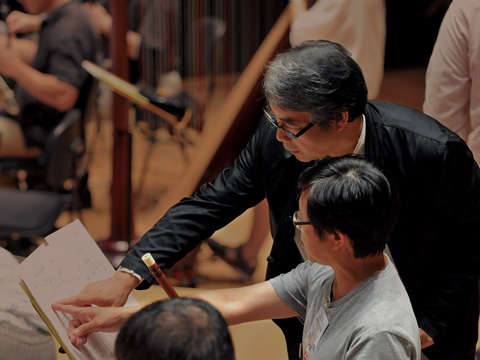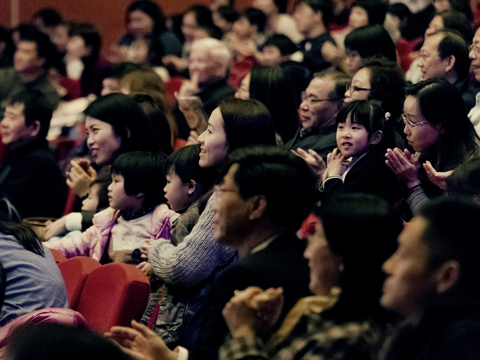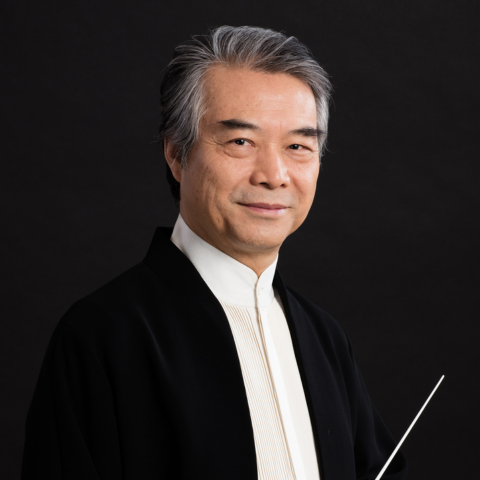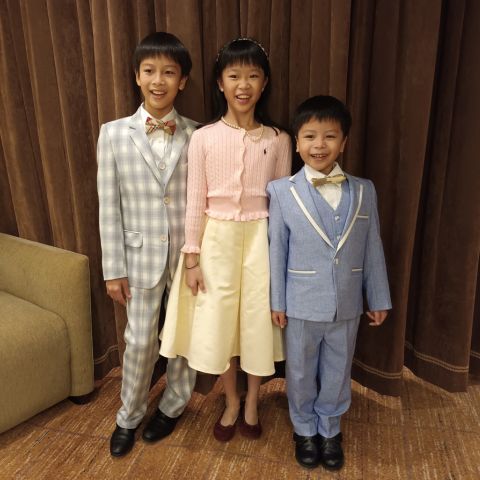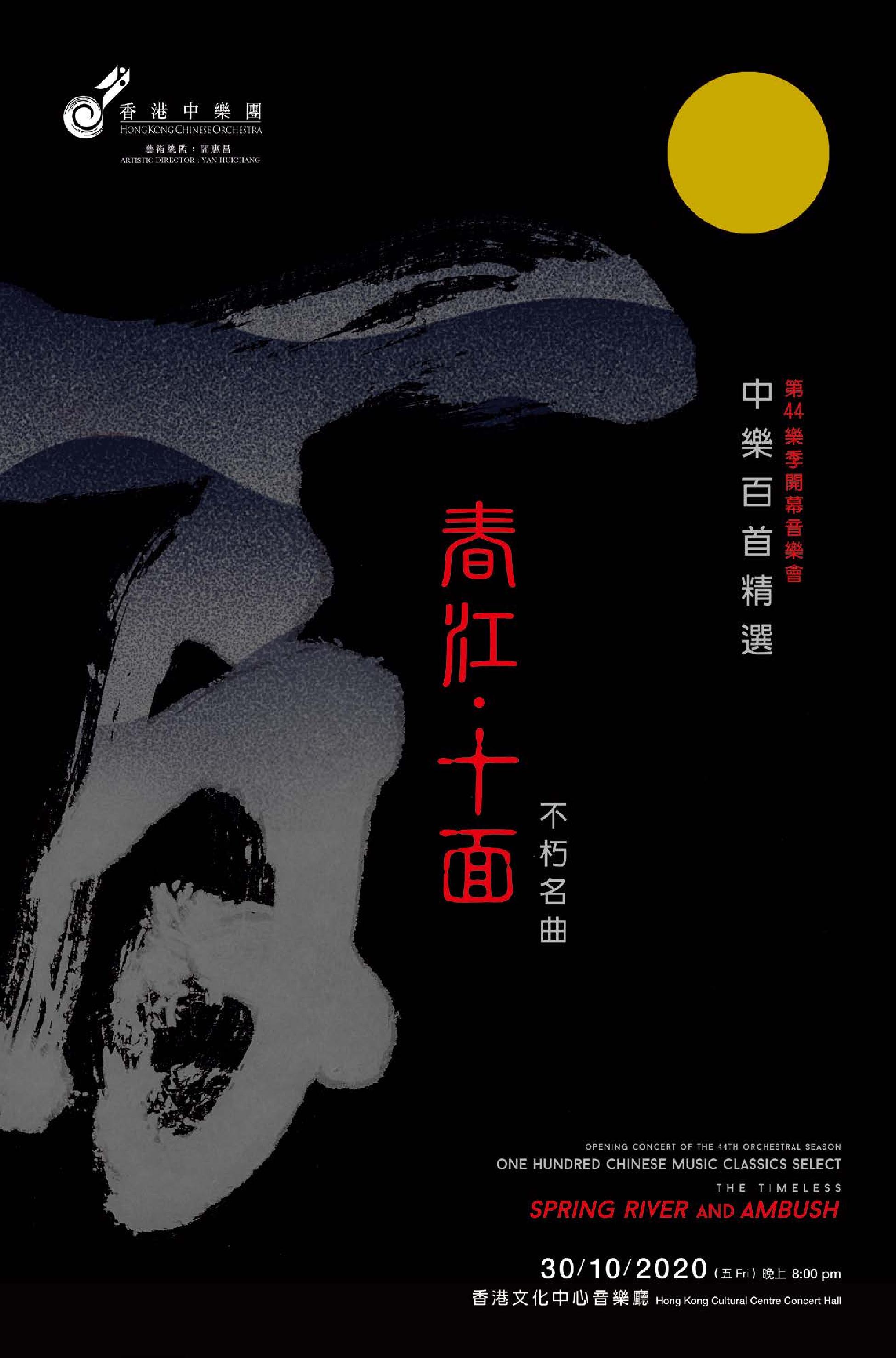
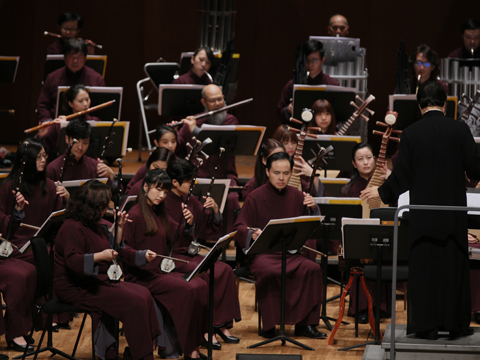
HKCO
Hong Kong Chinese Orchestra Environmental, Social and Governance Artistic Director and Principal Conductor for Life Orchestra Members Council Advisors & Artistic Advisors Council Members Management Team Vacancy Contact Us (Tel: 3185 1600)

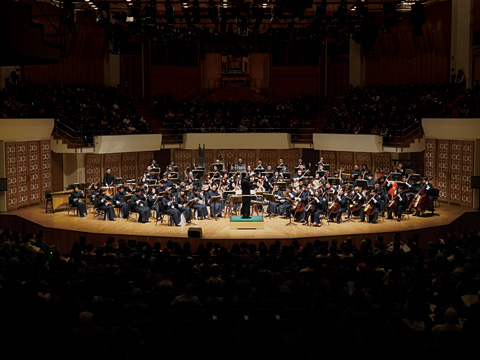
Concerts

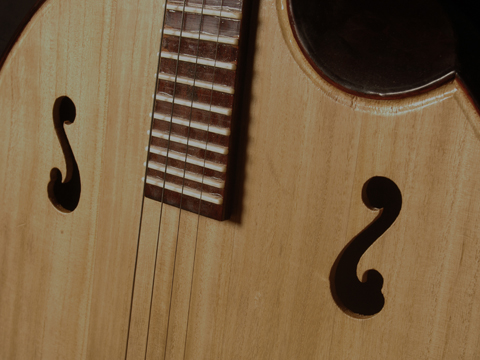
Education
The HKCO Orchestral Academy Hong Kong Youth Zheng Ensemble Hong Kong Young Chinese Orchestra Music Courses Chinese Music Conducting 賽馬會中國音樂教育及推廣計劃 Chinese Music Talent Training Scheme HKJC Chinese Music 360 The International Drum Graded Exam

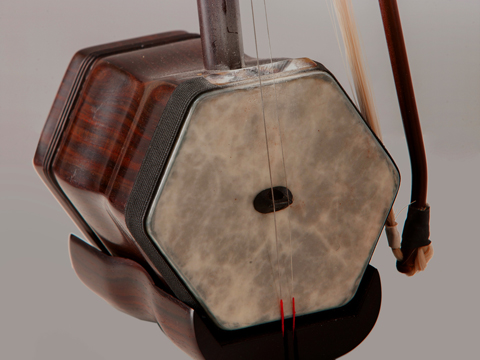
Instrument R&D
Eco-Huqins Chinese Instruments Standard Orchestra Instrument Range Chart and Page Format of the Full Score Configuration of the Orchestra
44th Orchestral Season
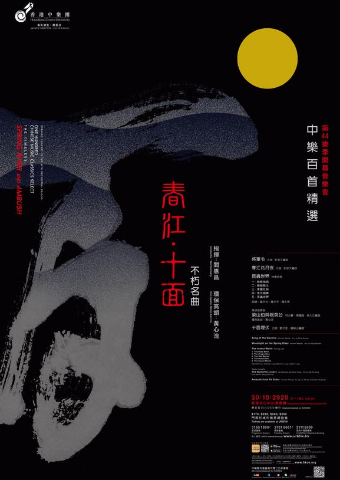
One Hundred Chinese Music Classics Select - The Timeless Spring River and Ambush
Additional Tickets available at Urbtix
(Originally scheduled on 25/9/2020)
Purchase Online Ticket Now: https://bit.ly/2T1Ikpv
In its history of more than 40 years, the Hong Kong Chinese Orchestra has commissioned around 2,300 original compositions or arrangements which are now in its repertoire. In order to share such notable works with music enthusiasts in Greater China and all parts of the world, the HKCO launched the project entitled ‘One Hundred Chinese Music Classics Select’, with over one hundred orchestral and ensemble pieces and concertos hand-picked by our artistic team to be performed over a timeframe of three years. The first showcase features such classics in Chinese music as Song of the General, Moonlight on the Spring River, Ambush on All Sides and more. The Insect World, the modern classic by Doming Lam, will be performed with recitation by the three Lung siblings, grandchildren of Lam. The Butterfly Lovers – a gaohu concerto transposed from the world famous violin version has gained world classic status. On this occasion, the heartrending story of the star-crossed lovers will be retold by Wong Sum Ho, young erhu virtuoso who joined the HKCO last year, using an HKCO Eco-Gaohu.
Song of the General Ancient Melody Arr. by Peng Xiuwen
Moonlight on the Spring River Ancient Melody Arr. by Peng Xiuwen
The Insect World Doming Lam
1. The Busy Bees
2. The Dragonflies
3. The Silk Worms
4. The Butterflies
5. The Insect World
Recitation by: Ambrose Lung, Berenice Lung, Callum Lung
Gaohu Concerto
The Butterfly Lovers He Zhanhao and Chen Gang Arr. by Ng Tai-kong
Eco-Gaohu: Wong Sum Ho
Ambush from All Sides Ancient Melody Arr. by Liu Wenjin and Zhao Yongshan
A Delectable Feast of All-time Favourites
Chow Fan-fu
There must be well over a hundred pieces of music that can fit the bill as “classics” in today’s Chinese orchestral repertoire. In programming the ‘One Hundred Chinese Music Classics Select’ concert series for the Hong Kong Chinese Orchestra, its artistic team would understandably have set their selection criteria. But from the angle of mass accessibility, the pieces have to possess timeless appeal. So, to put the selected classics together as a concert series, one can liken it to planning a banquet menu, with different tastes that need to be carefully considered. A mere jumble of even the rarest delicacies and finest foods will hardly achieve the desired culinary effect.
A study in contrasts
The five classics featured in this concert are like perennial favourites on the banquet table. To arrange the pieces in the concert programme, though, the considerations more important than simply accommodating their lengths within the concert duration are the order in which they are performed and how well they match and fit with each other. Apart from the differences in content, colour, mood and emotion, the sequencing and contrastive effects must also be complementary so as to highlight the particular character and texture of each piece. At the same time, as the opening concert for the season, all the pieces selected possess unique connotations. The most obvious is the opening number Song of the General, an ancient tune with traditional Chinese operatic colour and magnificent wind and percussion timbres, which creates the lively scene of the triumphant return of a victorious army. It is a befitting design to invite the audience to kick off the celebrations of the HKCO’s new season.
Next on the programme is Moonlight on the Spring River, an adaptation of another ancient tune, which paints a beautiful and tranquil scene and is in sharp contrast with Song of the General. The two not only portray different musical effects but also help the audience to relax after the exuberant opening piece.
As the last item before intermission, Doming Lam’s The Insect World is a commissioned work by the HKCO in the 1970s. It is an example of the successful integration of multiple modern compositional techniques with a full-size Chinese orchestra, and broadens the scope for symphonic Chinese music. To render and embed a variety of musical concepts as images represents a significant breakthrough, underscoring yet another contrast between The Insect World’s modernity and the quaint tones of the two preceding pieces.
Ambush from All Sides reprises the foci
The second half of the concert opens with The Butterfly Lovers gaohu concerto, adapted by HKCO in 1978 from the 1959 opera of a Chinese folklore. The original was a passage from traditional Chinese theatre, while the adaptation was a Western concerto for the violin. It was an instance of Chinese music employing foreign techniques. The HKCO’s subsequent gaohu edition not only provided a new panorama for symphonic Chinese music, but also added a different cultural touch to this well-known work.
The finale Ambush from All Sides constitutes the focal point of the concert by reprising the essence of the other four pieces. As another ancient tune, it is similar to Moonlight on the Spring River as it is also derived from pipa music. But unlike Moonlight which is from the ‘civil’ category with its soft, lyrical timbre, Ambush is from the ‘military’ category of the Northern school of pipa. The characteristics are starkly opposite. Also, Ambush is a robust number from the ‘military’ repertoire, the structure and technique of which are very dissimilar to the Western-style The Insect World and The Butterfly Lovers.
The difference between the heroic historical conflict of the two states of Chu and Han in Ambush and the love and regrets in the folklore The Butterfly Lovers is the difference between ‘thrills’ and ‘poignancy’ for the listener. The winner-takes-all message of the finale echoes the victorious army’s homecoming of the opening Song of the General. Like the highly anticipated main course of a banquet, Ambush from All Sides allows the audience to savour once again all the flavours of the other dishes already served. In other words, the finale wraps up the emotional roller coaster of all the changes in content, mood, colour and effects of the entire concert experience. The satisfying climax leaves the audience wanting an encore, and the freshness and appeal of these timeless melodies remain undiminished.
Your Support
Friends of HKCO
Copyright © 2025 HKCO
